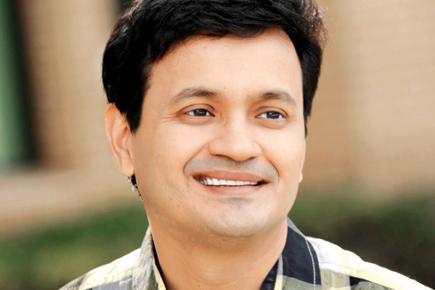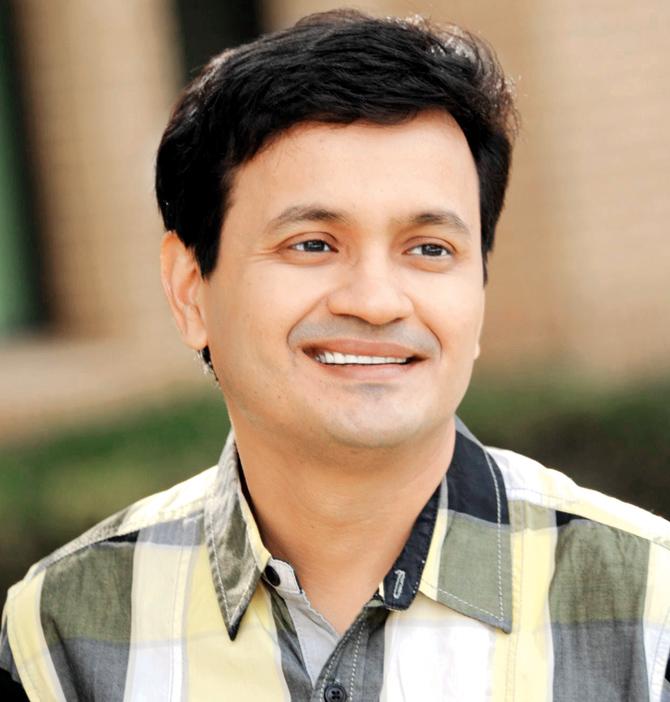Indian authors Amitava Kumar, Anjum Hasan, Jennifer Robertson, Ragini Tharor-Sirinivasan, Sudeep Sen and Tabish Khair bring out their slice of the cosmopolitan in the perceived provincial India in their essays of the latest issue of the journal, American Book Review

Saikat Majumdar
![]() Is provincial India limited in thoughts or is it cosmopolitan, which, like the glossy magazine with the name, has come to mean a swank and globalised space? The American Book Review, a journal that focuses on work by independent press, had addressed this question in their latest issue titled, Little India, edited by Indian author and academician Saikat Majumdar.
Is provincial India limited in thoughts or is it cosmopolitan, which, like the glossy magazine with the name, has come to mean a swank and globalised space? The American Book Review, a journal that focuses on work by independent press, had addressed this question in their latest issue titled, Little India, edited by Indian author and academician Saikat Majumdar.

Saikat Majumdar
ADVERTISEMENT
The theme, Little India, as suggested by your introductory essay is about the provincial life of the cosmopolitan. Could you explain?
Great art, as I argue in that essay, is seductively provincial in flesh and spirit. It is not only physically rooted in material spaces – often poor, backward and non-modern spaces – but it embodies the spirit of such locations, often untranslatable and un-exportable. Its greatness lies in seducing, even forcing the reader to enter and soak in that untranslatable spirit, rather than offering itself up for an easy transition into a glib idiom of universality – usually the abstract language of a privileged global bourgeoisie. This abstract language is framed and fortified by the idea of the cosmopolitan, which, it seems to me, has become to artistic modernism what humanism was to the Renaissance – the reigning deity and cultural fetish rolled into one. But the urge to be cosmopolitan – to experience, perhaps even embody many disparate, often distant cultures, is rooted in the troubled experience of colonial modernity, which stratifies the world according to a cultural hierarchy, where some locations are modern and cosmopolitan, and others backward, non-modern, and provincial. But if you look at the great works of modernist literature, such as that by Joyce and Lawrence, they celebrate the backward and the provincial – illiterate miners, lazy, drunken Dubliners. The most fascinating urge to embody cosmopolitanism comes from poor, backward periphery of global culture – a Stephen Dedalus (Joyce) growing up in sterile Dublin, an Apu (Bibhutibhushan and Satyajit Ray) growing up in a poor and remote village in Bengal. Cosmopolitanism, I argue, is at its richest, not in its jazzy global epicentres, but in its struggling, aspirational form, in the backward, the remote – the provincial margins of the world.
Is there a history of cosmopolitan writers rooted in the essence of the provincial life in Mumbai?
One of the most exciting phases of Mumbai's cultural history, it seems to me, was mid-century Bombay when the delightful promiscuity between poetry, film, art, and other cultural forms created an amazing vernacular cosmopolitanism – the world of Clearing House, Kala Ghoda, and the J.J. School of Art, populated by Arun Kolatkar, M.F. Hussain, Eunice DeSouza, Arun Khopkar, Nissim Ezekiel, and others. In a way this vernacular cosmopolitanism was brought to an end by the global success of Rushdie's Midnight's Children, also a fascinating Bombay novel but much more national in its aspiration, and canonized by its dazzling success in the metropolitan west. The Kala Ghoda/Clearing House energy, it seems to me, got minoritised by all that Booker noise, but I still see a peculiar Bombay version of provincial cosmopolitanism alive in figures like Naresh Fernandes, Jerry Pinto and others.
Particularly in the last decade, literary English writing/reading has been dubbed as elite (urbane) whereas a kind of popular English fiction (not considered literary) has become the voice of the suburban aspiring class. Your thoughts?
There are many fascinating strengths and many problems with this phenomenon. But I think Arvind Krishna Mehrotra puts it the best: someone like Chetan Bhagat is not aware that literature exists: he is starting on a clean slate. This peculiar tabula rasa might be a ridiculous thing for the more self-conscious practitioners of literature, but there is no denying that this kind of popular/suburban writing – at least the best of it – a fresh, young and confident sinew.
Why did this aspect of India become relevant for an American magazine?
American literature, of all literatures in the world, has celebrated provincial and backward locations unforgettably: the south of William Faulkner and Edith Wharton, the Ohio of Toni Morrison and Sherwood Anderson. In America Kansas can flex its muscles at New York in a way that Madhya Pradesh can rarely do at Delhi or Bombay; you can make fun of it but you cannot deny its confidence. Out of this confidence some great literature has emerged. American readers, too need to know that there is much more to India than Lutyens' Delhi and the global-cosmopolitan Bombay of Rushdie; even within the English-language tradition, there is Bihar and Shillong and Jharkhand – as writers like Tabish Khair, Amitava Kumar, Anjum Hasan and Hansda Sowvendra Shekhar remind us. But I don't think these literary worlds have come across powerfully yet to an American readership. I hope this focus on "Little India" will change a bit of that.
Do you see new writing emerging from the provincial cosmopolitan now? (As we are increasingly losing our linguistic identities and local nuances).
Not by a long shot if we look at non-English writing. My favorite book from last year, Vivek Shanbhag's Kannada novella Ghachar Ghochar, captures middle-class Bangalore in its delightful provincialisms. In English, all the writers named above, Rajat Chaudhuri's writing and photographs of Calcutta, even the Chetan Bhagat phenomenon eloquently articulated by Ulka Anjaria in this Focus – all of these, in different way, affirm the provincial – that the deepest, most unobtrusive proclamations of cosmopolitanism is to be found in the provincial peripheries of global culture.
 Subscribe today by clicking the link and stay updated with the latest news!" Click here!
Subscribe today by clicking the link and stay updated with the latest news!" Click here!







